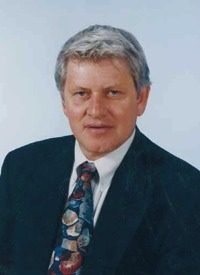
“Why should Tamenund stay?” he asks. “The pale-faces are the masters of the earth, and the time of the red-man has not yet come again.”
Well, there’s big news up the beach in Atlantic City that would bring a big smile to the old chief’s face.
In a development that’s sure to move large piles of cash from the wallets of the pale-faces to the pockets of the red-men, the Seminole Tribe of Florida has applied for permits to build a huge Hard Rock casino on the boardwalk. It’s a $275 million project, planned to be developed in stages, ending with 850 rooms.
Add a thousand Crazy Horse slot machines with pretty cocktail waitresses serving free fire water, and the pale-faces won’t know what hit ’em.
The Seminole Tribe bought the Hard Rock’s international business in 2006, paying $965 million for its casinos (except the Vegas location), hotels, restaurants and what’s said to be the world’s largest inventory of rock memorabilia — a collection that includes a fancy pair of Elton John’s high-heels, an old Bob Dylan guitar, and one of Madonna’s slightly worn bustiers.
With only some 3,300 members in the Seminole Tribe, the $965 million price tag for the Hard Rock business comes out to $292,424 per tribal member or $1.17 million for a family of four.
When the acquisition of Hard Rock’s international business was announced, Seminole Vice Chairman Max Osceola said: “Our ancestors sold Manhattan for trinkets. Today, with the acquisition of Hard Rock Cafe, we’re going to buy Manhattan back one hamburger at a time.”
Several months later, Mr. Osceola was accused of charging more than $85,000 in “personal expenses” to his tribe-issued American Express credit card. “Most of the charges,” reported the Miami Herald, “were for jewelry bought at the Platinum Jewelry Exchange in Hollywood, along with the purchase of Sound Advice stereo equipment, home security services and a Harley-Davidson motorcycle.”
Clearly, there’s now more going on economically at the reservation than selling beads by the side of the road or charging 50 cents to watch a tribe member wrestle an alligator.
The switch in Seminole fortunes from poverty to riches began when the Seminoles became the first U.S. tribe to offer high-stakes gambling when it opened an unregulated bingo hall in 1979 in Hollywood, Florida.
The money came in fast. “Eighteen years after his small tribe pioneered Indian gambling in America, Seminole Chairman James Billie can cruise over his territory in a $9 million jet and see his tribe awash in money,” reported the St. Petersburg Times. The jet once belonged to Philippine President Ferdinand Marcos.
With tribal sovereignty in place that gives the Seminoles the right to self-government, there’s no public accounting required regarding how much money each tribal member receives from the tribe’s gambling operations, its citrus business, or its 25-million-packs-a-year cigarette business. But current estimates are around $200,000 annually for each family of four.
From people across the country seeking to cash in via group victimhood membership, the tribe receives dozens of requests daily from folks trying to determine if they belong on any Seminole family tree. It’s like the scratch lottery.
Ralph R. Reiland is an associate professor of economics and the B. Kenneth Simon professor of free enterprise at Robert Morris University in Pittsburgh.


